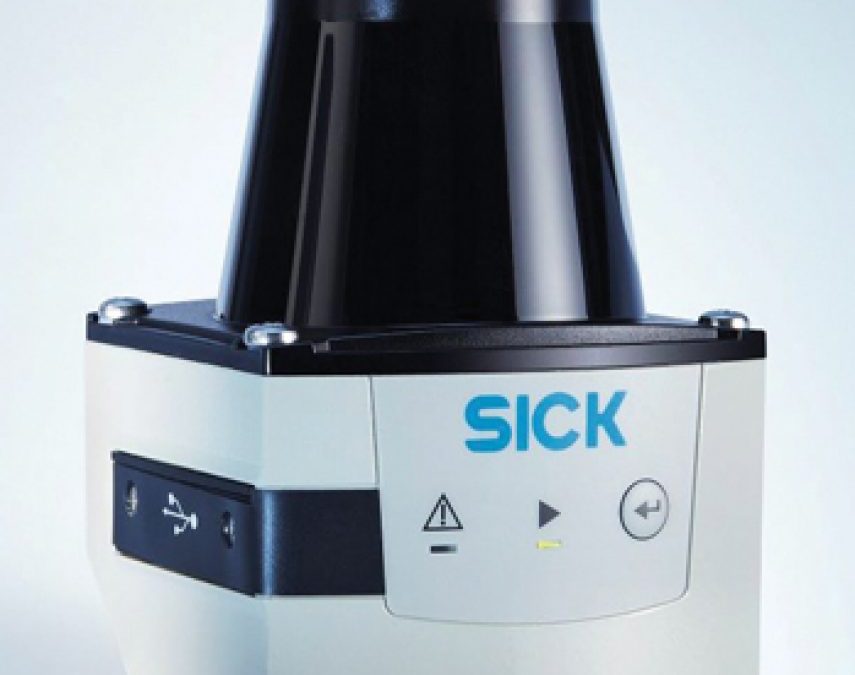A SICK Automation LiDAR sensor was used to build a winning robotic platform in the prestigious Drexel University’s annual College of Engineering senior project design competition, pointing the way to a number of industrial applications, including smart warehouses.
The Swerve team, Freddy Wachter (Mechanical Engineering and Mechanics, MEM); Alexander Nhan (Electrical and Computer Engineering, ECE); Harrison Katz (MEM) and Matt Wiese (MEM), set out to design and build a robotic platform.
Among eight teams who competed, the first-place result was the Swerve Robotic Platform, a highly versatile, three-wheeled, autonomy-enabled vehicle that is capable of carrying large loads while moving at high speeds and accelerations. Swerve was designed, fabricated and tested using motion-capture systems, advanced machining, computer simulations and software, as well as SICK’s LiDAR sensor.
While Swerve might look like a triangle on wheels with a lot of wires on it, the innovation lies in four design elements which the team packed into one robotic platform.
“Robotic mobility platforms today contain just a couple of the elements of lightweight, high-speed, omni-directional and integrated technology but Swerve incorporates all four,” said Wachter, adding that such elements make Swerve innovative, surpassing the functionality of similar platforms including one designed by NASA. For starters, Swerve weighs less and carries more than similar robots.
Sensors were a key technological element of Swerve’s design to support navigation, autonomy and nimbleness. The swerve uses Sick Automation’s 2D Light Detection and Ranging (LiDAR) sensors for area-monitoring data capture and IMU (Inertial Measurement Unit) sensors.
The Swerve robot receives the 2D LiDAR data through a SICK TiM561 sensor, which provides scan angles and ranges to the nearest object to those angles. These scans can then be visualised and used to create 2D representations of the robot’s local environment.
A number of mechanical and structural elements make Swerve nimble, fast and omni-directional. “Swerve has caster wheels that can rotate in every direction and uses slip rings to keep all the wires tangle-free,” Wachter said. This means wheels can move independently and turn on a dime. Brushless DC motors allow the Swerve to accelerate quickly.
“The major part of what helped us win the competition was in-depth design which was described well in our report,” said Wachter. Elements like welded crush tubes built into the aluminium chassis gave Swerve the strength to withstand heavy loads. Fabrication of Swerve’s components included 5-Axis water jet cutting, 3D CNC milling, aluminium welding, as well as manual lathe and milling processes performed by the Drexel Machine Shop along with local maker-space in Philadelphia called NextFab.
While Swerve may live on in BattleBot applications for now, future uses abound. In addition, personal mobility uses for Swerve include serving the disabled. Entertainment and amusement applications include serving as a base for trackless rides, allowing for easily changing the consumer experience without building a whole new attraction.
The logistics industry already has companies like Amazon deploying robots in the warehouse for picking orders. Swerve could supplement a warehouse labour force to meet peak demand periods or work every day. “Swerve has potential to work alongside warehouse personnel in a dynamic environment,” Wachter said.

